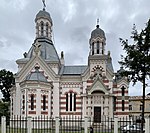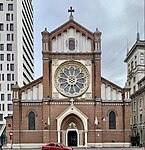Romanian Academy
1866 establishments in RomaniaLanguage regulatorsMembers of the International Council for ScienceMembers of the International Science CouncilNational academies ... and 3 more
National academies of arts and humanitiesRomanian AcademyRomanian culture

The Romanian Academy (Romanian: Academia Română [akadeˈmi.a roˈmɨnə]) is a cultural forum founded in Bucharest, Romania, in 1866. It covers the scientific, artistic and literary domains. The academy has 181 active members who are elected for life. According to its bylaws, the academy's main goals are the cultivation of Romanian language and Romanian literature, the study of the national history of Romania and research into major scientific domains. Some of the academy's fundamental projects are the Romanian language dictionary (Dicționarul explicativ al limbii române), the dictionary of Romanian literature, and the treatise on the history of the Romanian people.
Excerpt from the Wikipedia article Romanian Academy (License: CC BY-SA 3.0, Authors, Images).Romanian Academy
Calea Victoriei, Bucharest
Geographical coordinates (GPS) Address Nearby Places Show on map
Geographical coordinates (GPS)
| Latitude | Longitude |
|---|---|
| N 44.446341666667 ° | E 26.090005555556 ° |
Address
Academia Română
Calea Victoriei
010073 Bucharest (Sector 1)
Romania
Open on Google Maps










